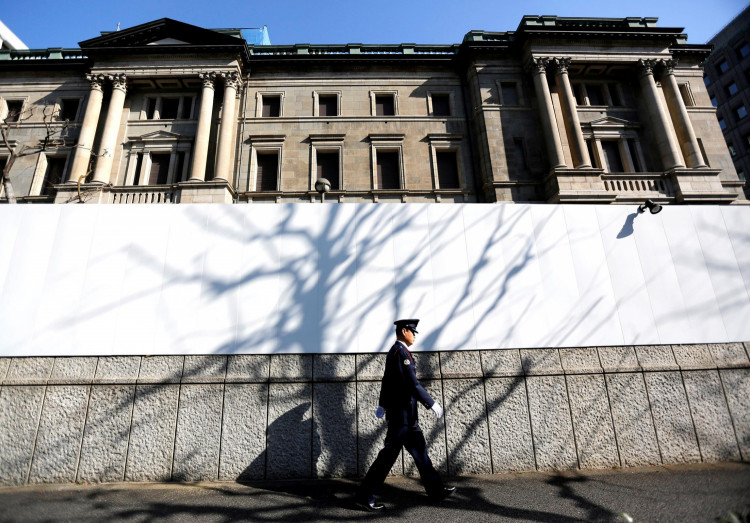The Bank of Japan (BOJ) has maintained its ultra-loose monetary policy, continuing to stand as the only central bank in the world with negative interest rates. This decision, confirmed at the BOJ's first meeting of the year, aligns with the forecasts of all economists surveyed by Reuters, who had anticipated the central bank to sustain its negative rate policy this month.
Maintaining a benchmark interest rate of -0.1%, the BOJ remains committed to its yield curve control policy, capping the 10-year Japanese government bond yield at 1%. Governor Kazuo Ueda, known for his dovish stance, reiterated this commitment in a speech last December.
In its recent quarterly outlook on Japan's economy, BOJ board members revised their median forecast for core consumer price growth down to 2.4% for the fiscal year 2024, a decrease from the 2.8% estimate made in October. However, they marginally increased the core CPI inflation estimate for fiscal 2025 to 1.8%, up from 1.7%.
Despite external pressures and global economic changes, including aggressive monetary tightening by the European Central Bank and the U.S. Federal Reserve, the BOJ is steadfast in its approach. The central bank's strategy hinges on the belief that sustained wage increases are crucial for keeping inflation consistently at its 2% target. This focus on wage growth is seen as a precondition for phasing out the decade-long accommodative policy.
Former top BOJ economist Seisaku Kameda commented on the situation, stating, "The chance of Japan seeing a positive wage-inflation cycle kick off is heightening." He also mentioned that the durability of this cycle is a factor the BOJ is likely scrutinizing closely.
The BOJ's decision precedes key meetings of other major central banks and comes at a time when Japan has been grappling with inflation rates exceeding the BOJ's target for over a year. Despite this, Governor Ueda has emphasized the importance of waiting for more concrete evidence of inflation staying around 2%, coupled with solid wage growth, before considering a rate hike.
There are signs of potential wage hikes in Japan's spring negotiations, with major firms expected to exceed last year's 30-year high of 3.58%. However, the steady rise in services prices, another prerequisite for exiting ultra-loose monetary policy, remains uncertain. While there have been incremental increases in services prices, they are mostly concentrated in sectors benefiting from rebounding tourism or facing acute labor shortages.
The BOJ's cautious approach also considers the decade-long history of stagnant wage growth in Japan, which has made it challenging for companies to pass on labor costs through price increases. This caution is evident in some smaller firms in regional areas that remain hesitant to raise pay, prompting policymakers to be wary of ending negative rates prematurely.
Recent economic data further complicates the picture. Service-sector activity experienced a decline in November, highlighting consumption weaknesses. Additionally, factory output is expected to suffer due to declining demand in China and issues at Toyota Motor's small-car unit. This backdrop of a fragile economic recovery adds to the uncertainty surrounding the timing of the BOJ's policy shift.
Economists like Toru Suehiro from Daiwa Securities and Yoshimasa Maruyama from SMBC Nikko Securities express caution, suggesting that the BOJ may need to wait for more data, such as the October-December GDP figures, before making significant policy changes.






